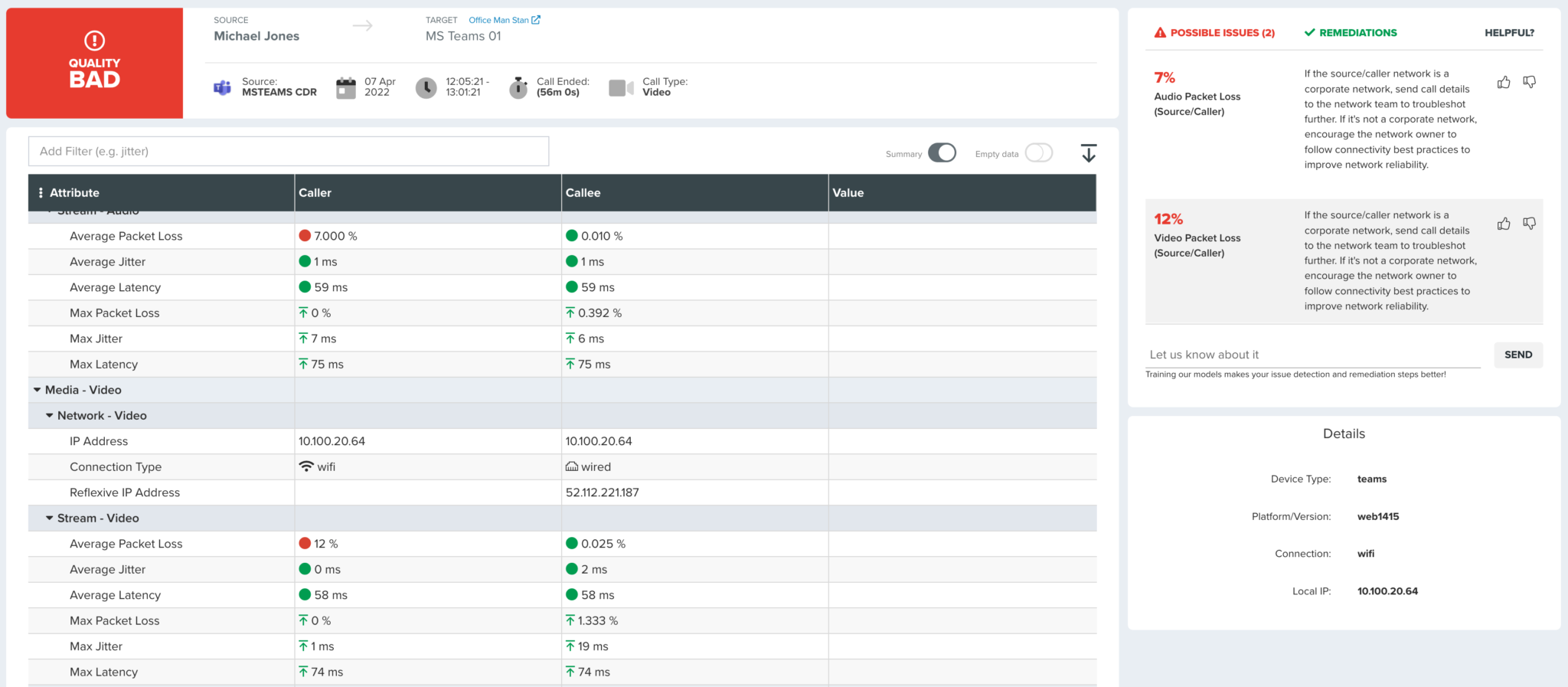Collaboration and experience management firm Vyopta recently announced that its insights platform now gives users access to "smart diagnostic" tools which it released, according to Jonathan Sass, VP of Product, Vyopta, following a change in the market over the course of the past few years.
The Coronavirus Pandemic caused many of organizations to increase the number of conference rooms they had. Today, many firms support 1,000-2,000 conference rooms built for video conferencing that act as the center of their UC environment. All thanks to evolving customer needs which led Vyopta to now support hundreds of thousands of users who work remotely.
Video and audio calls, Sass notes, today make up 75 percent of workplace interactions for those who leverage the technology. So, the firm set out to help administrators (in managing) its fleet of unified communications tools to better detect and diagnose issues via artificial intelligence and humans to optimize said user experiences.
With so many meetings taking place, no longer in the office, the complexity of said issues has increased, meaning more people from the IT department are getting involved; to resolve level-one and two support issues. There are also many issues that might arise with ACD (automatic call distribution) that may require human intervention.
According to Sass: "We wanted to let them diagnose and detect issues much sooner, given (the nature of work) today. We do that a couple of ways, mostly by analyzing hundreds of (points of data) to identify common issues."
How Does it Work?
Sass noted that Vyopta's customer base also helps refine the experience, adding that they do so by lending feedback on the best ways to optimize for troubleshooting issues in the future. He further said that:
"Smart Diagnostics' can score call and meeting data across UCaaS platforms and end-user devices. It can then determine any potential issues and then ranks them by severity. Vyopta's technology then assesses every issue possible - lending users access to the right ways to intervene via the Vyopta intelligent algorithm."
It uses the power of the crowd-crowd-sourcing knowledge from Vyopta’s entire user base to further resolve any detected issues. Zoom and Five9 have previously released similar features, as have other UCC firms hoping to boost customer (CX) and (UX) user experience.
The move, this time, made by Vyopta and its 'Smart Diagnostic' platform merely represents another step toward companies looking to democratize troubleshooting efforts across the industry.

Sass said that its release was a bit different: though. He further stated that Vyopta is a specialist in the UCC arena, which means it has time to think through any potential issues that could surface. Even though it partners with the likes of Cisco, he acknowledges that Cisco - as well as others - have a lot on their plates; meaning some things may undoubtedly fall through the cracks.
Sass let me in on how and why the company decided to release its latest features, telling me:
"We're doing so by extending the ability to improve the quality of collaboration experiences beyond just IT specialists and engineers."
He noted that they hope the feature will become especially helpful in determining issues for those working remotely. Such functionalities extended to customers, partners, and agents alike could be valuable if leveraged with care.
Does CX Come at the Bigger Price of Privacy?
According to Vyopta data: 20% of all meetings have 'quality of experience' issues. An astonishing 90% of these issues, according to Sass, go undetected and unreported to members of IT teams.
"As a result, many issues continue to occur, negatively affecting the digital experience of all participants, which is why we wanted to extend our customers the ability to detect and identify any issues so they can get resolved expediently."
Sass notes that this can reduce (what he called) 'bad quality experiences' by up to 50%. There are, for some users, privacy concerns, namely with reports surfacing of employers eavesdropping on employees using the very technology designed to keep them connected in the workplace.
Learn more about Vyopta, here:
Should employees have reasonable expectations of privacy? The answer to that question is 'yes,' but as employees (in many cases) have contracts - it is critical to know the ins and outs of said contract. There are tons of other factors, including how users access the technology gets used.
Is the computer a personal computer or one owned by the company yet given to the employee to perform their job? This all matters, but Sass assured me that in Vyopta's case: there is no need to address these concerns, as the firm does not collect any significant data from the calls and meetings it monitors.
"We only collect telemetrics to help improve the quality, reliability, and overall collaboration experience."
Telemetric data are merely traces, or more precisely, distributed (traces of) data that represent snapshots of causal chains of events/transactions - meaning there is no cause for privacy concerns over the use of said Vyopta technology.
Taking a Multi-Vendor Approach
"We support them all" - well, at least many of them, according to Sass. Today, a single-vendor strategy is no longer a reality, and as we move forward, it becomes less likely that single-vendor environments will dominate the way people in business communicate and collaborate.
Vyopta supports quite complex requirements; for nearly all major vendors on the market, even some of the more obscure ones.
"Many, even when they (are aligned) around a single-vendor ecosystem, have multiple manufacturers involved, making for complex requirements in many cases."
He gave the example of a company using Microsoft Teams Voice with direct routing and an SBC (session border control) - and Vyopta can help manage this experience through and through.
It is the very nature of being vendor agnostic that makes companies like Vyopta successful, and the fact that it can clearly and concisely convey the value to the very firms that might not even know they need the assistance of the kind of tools Vyopta builds.
We are sure to place a heavier reliance on UC management and troubleshooting tools over the coming years, expressly as remote work shows no signs of slowing down.



